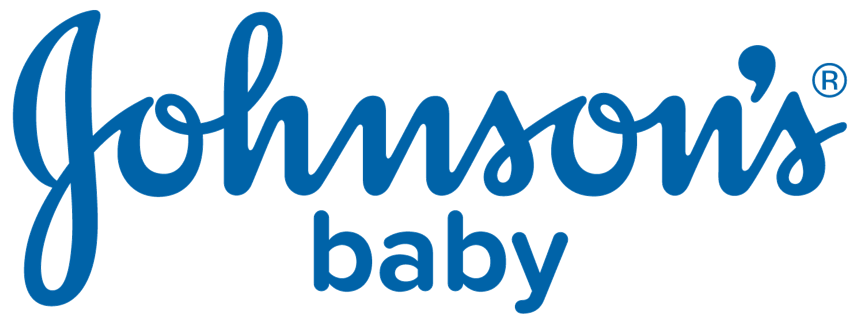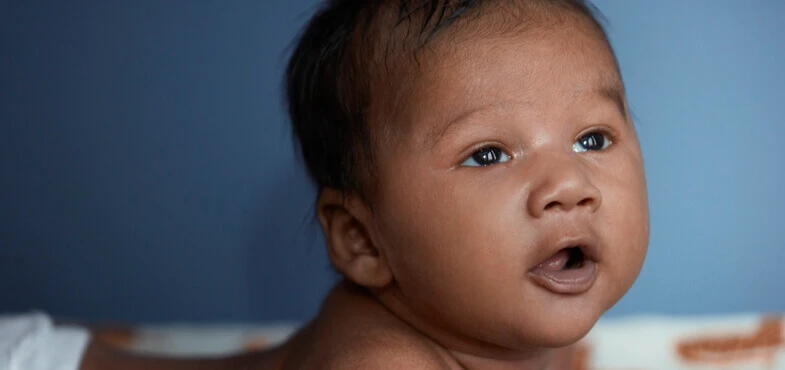Nappy rash can be very common. In fact, up to 1/3 of babies have it at any one time1
Although it‘s common, it can irritate your baby. Nappy rash can lead to :
Increased crying
Changes in sleep patterns
Agitation and restlessness
Changes in eating habits
Less urination and/or defecation – to avoid pain.
Here, we’ll explain what nappy rash is, its causes, symptoms, and how you could look to prevent it. We’ll also explore some of the best treatment options for nappy rash, so you can get your baby back to feeling 100%.
In this guide:
1 – https://www.nidirect.gov.uk/conditions/nappy-rash
What is nappy rash?
Nappy rash, also known as diaper dermatitis, is a common rash that appears on a baby’s bottom – usually on the skin where their nappy sits2. It’s usually developed by infants and children under two years old, though adults can suffer from it too2.
It presents as a redness and/or soreness on and around your baby’s bottom or genitals3 and is often caused by friction and irritation from their nappy if they’ve been wearing it for too long2. While it can be distressing for both you and baby, it can often be treated at home4.
2 – https://www.webmd.com/parenting/diaper-rash-treatment (Page 1)
2 – https://www.webmd.com/parenting/diaper-rash-treatment (Page 1)
3 - https://www.nhsinform.scot/ready-steady-baby/early-parenthood/caring-for... (Page 3)
2 – https://www.webmd.com/parenting/diaper-rash-treatment (Page 2)
4 - https://www.nhs.uk/conditions/baby/caring-for-a-newborn/nappy-rash/ (Page 1)
What causes nappy rash?
There are a few different nappy rash causes. It’s a good idea to be aware of these so you can start working towards prevention while keeping an eye out for some possible triggers. For example:
Bacteria. Your baby could develop nappy rash if you don’t clean them or change their nappy often enough4.
Urine and faeces. Similar to the above, the rash can develop if your baby’s skin has been in contact with urine or faeces for a long time4.
Fungi. Babies can develop thrush, which is a fungal infection that also causes nappy rash4.
Friction.For example, when a nappy rubs against your baby’s skin4. Sometimes, leaving your baby out of their nappy for a while can help2.
Allergic reactions. Your baby’s skin might be sensitive to some soaps, bubble baths, or detergents4.
Some chemicals. Similarly, some babies’ skin can be irritated by certain fragranced products – for example, baby wipes – or products containing alcohol4.
Medicines. Sometimes, certain medicines, like laxatives or antibiotics, can cause nappy rash4.
4 - https://www.nhs.uk/conditions/baby/caring-for-a-newborn/nappy-rash/ (Page 2)
4 - https://www.nhs.uk/conditions/baby/caring-for-a-newborn/nappy-rash/ (Page 2)
4 - https://www.nhs.uk/conditions/baby/caring-for-a-newborn/nappy-rash/ (Page 2)
4 - https://www.nhs.uk/conditions/baby/caring-for-a-newborn/nappy-rash/ (Page 2)
2 – https://www.webmd.com/parenting/diaper-rash-treatment (Page 4)
4 - https://www.nhs.uk/conditions/baby/caring-for-a-newborn/nappy-rash/ (Page 2)
4 - https://www.nhs.uk/conditions/baby/caring-for-a-newborn/nappy-rash/ (Page 2)
4 - https://www.nhs.uk/conditions/baby/caring-for-a-newborn/nappy-rash/ (Page 2)
What does nappy rash look like?: Nappy rash symptoms
Nappy rash is often found on a baby’s bottom or genitals, and appears as red, sore, and irritated skin2. As the name suggests, the rash is often found on the skin underneath and around a baby’s nappy4.
There are some further signs to look out for on your baby’s skin. Nappy rash symptoms often include4:
Red and sore patches. These may sometimes look ‘raw’.
Skin that is dry and scaly. This can often be itchy.
Red or brown spots, pimples, and nappy rash blisters. These may appear differently depending on your baby’s skin tone.
Lighter patches on babies who have brown or black skin2.
Your baby’s skin feels hot to the touch.
General signs of increased distress or discomfort.
2 – https://www.webmd.com/parenting/diaper-rash-treatment (Page 2)
4 - https://www.nhs.uk/conditions/baby/caring-for-a-newborn/nappy-rash/ (Page 1)
4 - https://www.nhs.uk/conditions/baby/caring-for-a-newborn/nappy-rash/ (Page 1)
2 – https://www.webmd.com/parenting/diaper-rash-treatment (Page 2)
Preventing nappy rash
Most nappy rashes are mild and can often be treated and prevented with simple skincare steps. For example4:
Changing wet or dirty nappiesas soon as you can.
Making sure your baby’s skin is clean and dry. Gently pat or rub when doing so.
Cleaning their skin using warm water, and avoiding products that use strong ingredients, like alcohol.
Bathing your baby regularly to help them stay clean. Try not to do this more than twice a day, as this can dry their skin out.
Making sure you’re using the right nappies. Ensuring they fit properly means there’s less chance of them rubbing.
Similarly, using extra absorbent nappies to keep them as clean as possible.
When you can, leaving your baby without a nappy for periods of time, to let their skin breathe.
4 - https://www.nhs.uk/conditions/baby/caring-for-a-newborn/nappy-rash/ (Page 1)
Nappy rash treatment options
As with prevention, some of the best treatment options for nappy rash involve everyday skincare . Remember:
Clean
Use warn water or mild, fragrance and alcohol-free baby wipes to gently clean your baby’s skin4.
Dry
Gently pat the skin dry – try to get rid of any moisture4.
Apply
If the skin is red and sore, apply a layer of nappy barrier cream to the area during each nappy change3.
However, in some cases, you might need to see a doctor or pharmacist for further treatment. They may be able to recommend a cream to use at home4.
Keep in mind, that you should only use a nappy cream if you notice your baby’s skin is red and sore3. Use a decent amount, and rub in gently, making sure it’s well applied3.
Your doctor may prescribe you a few things to help, especially if they think your baby might have developed an infection4. These often include4:
Antifungal creams. They may prescribe this if they think your baby has thrush.
Steroid creams or ointments. To help with red and sore patches.
Antibiotics. For if your baby has a bacterial infection.
When to see a doctor about nappy rash
If your baby is in a lot of discomfort, it may be best to visit your GP4. We recommend you contact a doctor if you notice 4:
Your baby’s nappy rash is spreading.
The rash isn’t going away.
They have a high temperature.
Increased distress and discomfort.
4 - https://www.nhs.uk/conditions/baby/caring-for-a-newborn/nappy-rash/ (Page 2)
4 - https://www.nhs.uk/conditions/baby/caring-for-a-newborn/nappy-rash/ (Page 1)
3 - https://www.nhsinform.scot/ready-steady-baby/early-parenthood/caring-for... (Page 3)
4 - https://www.nhs.uk/conditions/baby/caring-for-a-newborn/nappy-rash/ (Page 2)
3 - https://www.nhsinform.scot/ready-steady-baby/early-parenthood/caring-for... (Page 3)
3 - https://www.nhsinform.scot/ready-steady-baby/early-parenthood/caring-for... (Page 3)
4 - https://www.nhs.uk/conditions/baby/caring-for-a-newborn/nappy-rash/ (Page 2)
4 - https://www.nhs.uk/conditions/baby/caring-for-a-newborn/nappy-rash/ (Page 2)
4 - https://www.nhs.uk/conditions/baby/caring-for-a-newborn/nappy-rash/ (Page 2)
4 - https://www.nhs.uk/conditions/baby/caring-for-a-newborn/nappy-rash/ (Page 2)
Nappy rash treatment FAQs
What is the best treatment for nappy rash?
Nappy rash can be treated using simple cleaning and skincare steps2. For example, cleaning your baby with warm water and gentle, fragrance-free products, keeping the skin as dry as possible4, and using prescribed nappy rash creams when necessary3.
How do you treat nappy rash blisters?
If your baby develops nappy rash blisters, call your doctor as soon as you can2. They will be able to examine the rash and blisters and provide the right treatment. This may include steroid or fungal creams, or antibiotics4.
How long does it take for nappy rash to go away?
When treated, nappy rash can often clear up in around three days1. However, other bacterial or fungal infections, such as thrush, can take a few weeks to go completely2. If you notice your baby’s nappy rash isn’t clearing up, or you’re concerned about other symptoms, contact your GP4.
Is nappy rash painful?
Nappy rash can sometimes be sore and irritating for your baby. It can also be itchy if the skin is dry and flaky2. This is why it’s a good idea to keep an eye out for nappy rash symptoms, so you can treat it as soon as possible. Remember, try to keep your baby’s bottom as clean as possible, and make sure they’re dry before putting them in their nappy. Don’t forget to use fragrance and alcohol-free products4.
2 – https://www.webmd.com/parenting/diaper-rash-treatment (Page 3)
4 - https://www.nhs.uk/conditions/baby/caring-for-a-newborn/nappy-rash/ (Page 1)
3 - https://www.nhsinform.scot/ready-steady-baby/early-parenthood/caring-for... (Page 3)
2 – https://www.webmd.com/parenting/diaper-rash-treatment (Page 2)
4 - https://www.nhs.uk/conditions/baby/caring-for-a-newborn/nappy-rash/ (Page 2)
1 – https://www.nidirect.gov.uk/conditions/nappy-rash (Page 2)
2 – https://www.webmd.com/parenting/diaper-rash-treatment (Page 2)
4 - https://www.nhs.uk/conditions/baby/caring-for-a-newborn/nappy-rash/ (Page 2)
2 – https://www.webmd.com/parenting/diaper-rash-treatment (Page 2)
4 - https://www.nhs.uk/conditions/baby/caring-for-a-newborn/nappy-rash/ (Page 1)
JOHNSON'S®Pioneering Safety and Science in Baby Care
We are committed to working with Parents, Healthcare Professionals and Scientists to ensure our baby products continue to deliver high standards of safety and care.

